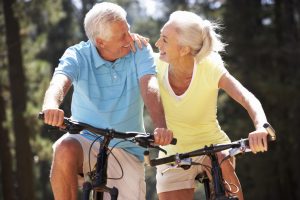- Craft a clear vision and carefully prioritize features to establish a definitive direction.
- Establish a practical budget and diligently adhere to it for optimal financial management.
- Collaborate with architectural firms to benefit from their expert guidance and insights.
- Embrace functionality without compromising aesthetics.
- Monitor the construction process closely to stay aligned with your vision.
Embarking on building your dream home from scratch is a thrilling and monumental endeavor. It’s a chance to create a living space that encapsulates your unique tastes, needs, and aspirations. However, such a project comes with its challenges and intricacies. To help you navigate this exciting yet complex process, here are five indispensable tips that will guide you from the initial idea to the day you enter your newly built dream haven.
1. Define Your Vision and Prioritize Features
The foundation of building your dream home is a crystal-clear vision of what you desire. Take the time to visualize how you want your home to look and feel. Consider factors such as architectural style, layout, size, and the number of rooms. Think about both your current needs and potential future requirements. Create a list of features that you consider non-negotiable, whether it’s a spacious kitchen, a home office, or a large garden. Prioritize these features to ensure they are integrated seamlessly into the design.
In addition, explore innovative ideas that can enhance your daily life. Think about incorporating energy-efficient technologies, smart home systems, or sustainable materials. Remember, this is the stage where creativity thrives, so let your imagination run wild.
2. Set a Realistic Budget and Stick to It

While building your dream home is exciting, setting a realistic budget is crucial to ground your aspirations in reality. Balancing your dreams with financial prudence will ensure that the result is not just your fantasy home but a financially sustainable project.
Here are some tips on how to set a realistic budget:
Know Your Needs
Before you start the budgeting process, think about what your ideal home should include. Consider the rooms you need and any special features like a home gym or media room. Knowing your needs will allow you to make more informed decisions during budgeting.
Research Costs in Your Area
Research the typical costs for materials and labor in your area. Contact multiple contractors or builders to get an accurate estimate of the cost you will incur. Don’t forget to factor in taxes and additional fees associated with a building project.
Balance Quality vs. Cost
As you are deciding on your budget, make sure to balance quality and affordability. If you skimp on materials or labor to save money, you may have a lower-quality home that could cost more in the long run.
Consider Secondhand Materials
Consider buying secondhand materials, such as furniture and appliances, from thrift stores or online marketplaces like eBay and Craigslist. These items can provide quality and style at a fraction of the price. You can also look for discounts on contractor supplies from home improvement stores like Home Depot or Lowe’s.
3. Work with Architecture Firms
Bringing your dream home to life requires expertise; this is where working with reputable design-build architecture firms comes into play. These professionals will help you to design, build, and furnish your home. They bring together the creative vision of architects, the technical skills of engineers, and the practical experience of builders to develop detailed plans that meet your needs. Design-build architecture firms will also coordinate all the necessary materials and manage any contractors or subcontractors. This creates a seamless process that allows you to focus on other aspects of the project.
4. Embrace Functionality Without Compromising Aesthetics
Aesthetics and functionality should go hand in hand in your dream home. While focusing solely on appearance is tempting, a well-designed home combines beauty and practicality. Consider how you move within the space — from the flow between rooms to the placement of windows for optimal natural light. Each design decision should enhance your daily life.
Think about the future as well. Your dream home should adapt to evolving needs, whether accommodating a growing family, incorporating aging-in-place features, or creating multifunctional spaces. A balance between form and function will create a home that impresses visually and serves as a comfortable and efficient living space.
5. Monitor the Construction Process Closely

As construction begins, your active involvement is paramount. Regularly visit the site to monitor progress and address any concerns promptly. Maintain open lines of communication with your builder, contractors, and architect. This level of engagement ensures that the project stays aligned with your vision and allows for real-time adjustments if needed.
Be prepared for challenges that may arise during construction. Weather delays, material shortages, or unforeseen structural issues are not uncommon. Your ability to adapt and make informed decisions will influence the outcome. Building your dream home is a journey; each twist and turn contributes to the final result. Stay patient, communicative, and excited — soon, you’ll be stepping into realizing your lifelong dream.
To Wrap It Up
Building your dream home from scratch is an incredible opportunity to realize your aspirations. By defining your vision, setting a budget, collaborating with experts, prioritizing functionality, and staying engaged in construction, you can ensure that your dream home is aesthetically stunning and a haven that caters to your unique lifestyle. It’s a journey that requires careful planning, dedication, and a touch of patience, but the end result — your dream home — is more than worth the effort.



















